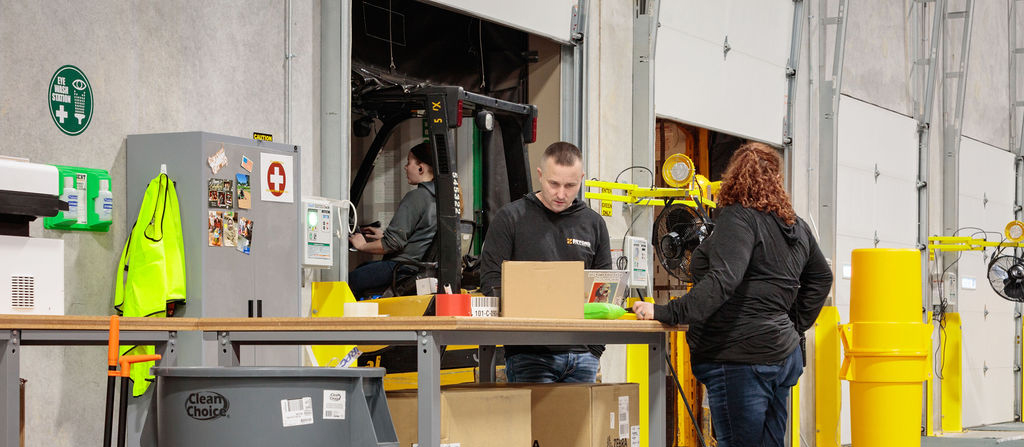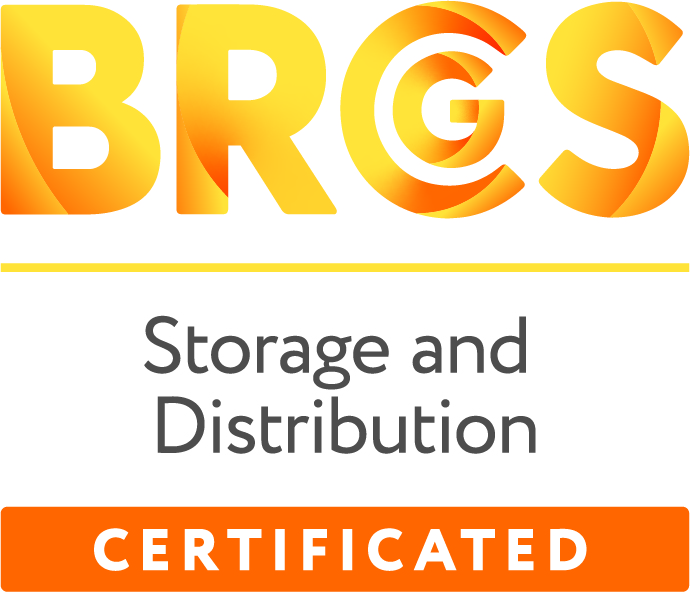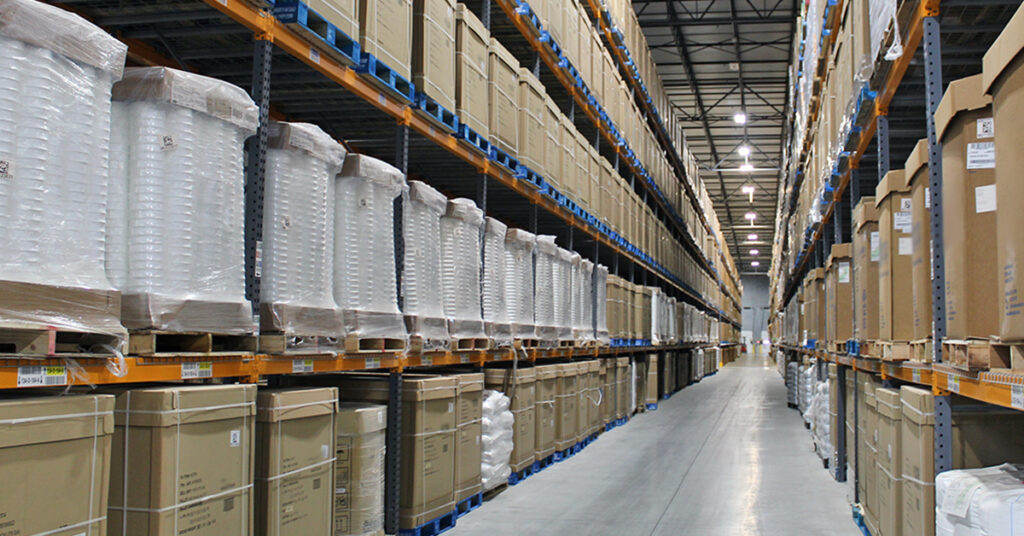In the food industry, regulatory compliance is essential in ensuring food safety and quality. When it comes to storage and distribution, there are many regulatory agencies with numerous requirements and laws around food products. Food-grade warehousing plays a significant role in meeting these regulatory requirements.
What is Food-Grade Warehousing?
Food-grade warehousing refers to the storage and handling of food products in a facility that meets strict hygiene and safety standards. There are different types of food-grade warehousing including ambient, refrigerated, and frozen. These facilities are designed and operated to maintain the integrity of the food products stored within them.
Food Storage Regulations
There are many regulatory requirements for food storage in the United States. These regulations are in place to ensure the safety and quality of food products.
The Food Safety Modernization Act (FSMA) is one of the most significant regulations in place. FSMA is designed to prevent foodborne illness by requiring facilities to implement preventive controls, such as Hazard Analysis and Critical Control Points (HACCP). HACCP is a food safety management system that identifies and evaluates potential physical, chemical, and biological hazards. It is a systematic approach that aims to prevent foodborne illness by identifying potential hazards and taking steps to prevent or eliminate them.
Current Good Manufacturing Practices (CGMPs) are another set of regulations that food-grade facilities must follow. GMPs are guidelines for the design and construction of food facilities, as well as the handling and storage of food products.
Food-grade facilities must be registered with the Food and Drug Administration (FDA) and/or the U.S Department of Agriculture (USDA).
Temperature and Humidity Control
Improper temperature and humidity control can lead to the growth of bacteria and other harmful microorganisms, causing spoilage and contamination of food products. Temperature-controlled storage is more involved than just keeping the area within a temperature and humidity range. Examples of other requirements include temperature-recording equipment, processes around the loading/unloading of food products, and procedures for actions to be taken should the temperature-controlled area fall outside acceptable standards.
Sanitation and Cleaning Procedures
Food-grade warehouses have strict sanitation and cleaning procedures in place to ensure that the facility and equipment are clean and free from contaminants. These procedures focus on maintaining appropriate hygiene standards and executing best practices to minimize contamination risk.
Pest Management
Pest management involves the implementation of a comprehensive pest control program that includes preventive measures, monitoring, and control measures. Preventive measures may include sealing cracks and gaps in the building, implementing good sanitation practices, and using pest control devices. Pest control prevents contamination and damage to food products and ensures compliance with food safety regulations.

Getting Certified as a Food-Grade Warehouse
To obtain a food-grade certification, warehouses undergo intense audits looking at everything from operational practices and personnel to product safety and quality management systems. Certifications are awarded following a passed audit by a certification body, such as AIB International. AIB is one of the leading providers of certification audits and training related to food safety programs. When a facility is recognized as AIB-certified, they are certified by AIB in one of the following standards.
Examples of Food-Grade Certifications
There are several types of food-grade certifications for warehouses, each with its own set of requirements and standards. Some of the most common certifications include:
BRCGS (Brand Reputation through Compliance Global Standard) certification:
BRCGS Storage and Distribution is a global certification scheme designed to ensure the safety, quality, and legality of storage and distribution of food, packaging, and consumer products. The certification is managed by the Brand Reputation through Compliance (BRC), formally the British Retail Consortium, which is a leading safety and quality certification program for food and non-food products.
BRCGS provides a framework for managing product safety, integrity, and quality throughout the storage and distribution process. It covers a range of areas, including site and building standards, personnel hygiene, cleaning, and maintenance, and operational controls such as stock rotation, traceability, and product recall. BRCGS is recognized by retailers, manufacturers, and food service companies worldwide as a benchmark for best practice in storage and distribution. In 2000, it was the first food safety standard to be recognized by the Global Food Safety Initiative (GFSI).
SQF (Safe Quality Food) certification:
Managed by the Safe Quality Food Institute (SQFI), the SQF program is a globally recognized certification program for food safety and quality management systems.
The SQF certification program covers a range of food industry sectors, including primary production, manufacturing, distribution, and retail. The program provides a framework for food safety and quality management systems based on internationally recognized standards, such as HACCP (Hazard Analysis and Critical Control Points).
There are three levels of SQF certification: Level 1, Level 2, and Level 3. Each level builds on the previous level and provides increased assurance of food safety and quality management. Level 1 is a basic food safety certification, while Level 2 includes a comprehensive HACCP plan and is recognized by GFSI. Level 3 is the highest level of certification and includes an additional focus on continuous improvement and risk management.
ISO 22000 (International Organization for Standardization):
ISO 22000 is a globally recognized certification scheme that specifies requirements for a food safety management system (FSMS). The certification is based on the ISO 22000 standard and provides a framework for managing food safety risks throughout the supply chain.
The certification program is applicable to all types of organizations in the food industry, including primary production, processing, packaging, distribution, and catering services. The program provides a systematic approach to identifying, preventing, and controlling food safety hazards to ensure food is safe for consumption.
FSSC 22000 (Food Safety System Certification) certification:
FSSC 22000 is very similar to the above-mentioned ISO certification because it is based on the ISO 22000 standard. The main differences between the two are that FSSC 22000 is recognized by GFSI and contains additional requirements.
The FSSC 22000 certification program covers a range of food industry sectors, including food manufacturers, food packaging manufacturers, and organizations involved in the storage and distribution of food products. The scheme provides a framework for food safety and quality management systems based on international and independent standards, such as ISO 22000, ISO 9001, and specifications for sector-specific Pre-Requisite Programs (PRPs), including ISO/TS 22002-1.
Each certification requires businesses to implement a comprehensive food safety management system and undergo regular audits and assessments to ensure compliance with the certification standards.
How Food-Grade Warehousing Helps Meet Regulatory Requirements
Facility Design and Construction Standards
Food-grade warehousing facilities are designed and constructed to meet strict food safety and quality standards. The facilities are designed to prevent contamination and meet the guidelines for GMPs. The design of food-grade warehouses includes features like temperature and humidity control systems, lighting, and ventilation systems that are specifically designed to protect the quality and safety of food products.

Proper Storage and Handling of Food Products
Food-grade warehousing facilities have detailed protocols in place for the storage and handling of food products. These protocols ensure that food products are stored properly to prevent spoilage and contamination. Additional food-grade facility protocols include water quality programs, glass and brittle policies, record-keeping procedures, audit/inspection processes, and more.
Warehouse Management System (WMS) Capabilities for Food Products
Warehouse management systems organize inventory, orders, shipments, and processes for distribution, manufacturing, and third-party logistics companies. Different management systems have vastly different functionalities. When it comes to the storage and distribution of food products, there are many reasons why lot and expiration tracking capabilities are essential in a WMS.
- Ensure compliance with regulations: Food safety regulations require companies to keep accurate records of product expiration dates and lot numbers to ensure compliance with food safety standards.
- Minimize waste: Expiration tracking helps companies manage inventory and ensure that products are used before they become expired, therefore minimizing waste.
- Track product quality: Products sold in batches or lots must be traceable in case of quality issues or recalls. A WMS with lot tracking capabilities enables companies to track products by batch or lot number, making it easier to identify the affected products and manage any issues.
- Complying with customer requirements: A WMS with expiration tracking helps companies ensure that products are delivered according to customer expiration requirements. Examples include not allowing a product to be picked within a number of days of its expiration date and factoring transit times into customer expiration requirements.
Third-Party Food-Grade Warehousing Solutions
Regulatory compliance is critical in the food industry. Food-grade warehousing plays a significant role in meeting regulatory requirements. Businesses can ensure they comply with strict food regulations by partnering with food-grade 3PL warehouse providers.
Utilize Food-Grade Warehousing Services with Beyond Warehousing
The Beyond team takes pride in  the care of our facilities, and we encourage potential clients to set up a tour. All Beyond Warehousing facilities are registered with the FDA and USDA. We also have food-grade warehousing that has been certified by AIB International for the storage and distribution of food products. Looking for an experienced food-grade 3PL? Contact the Beyond team today!
the care of our facilities, and we encourage potential clients to set up a tour. All Beyond Warehousing facilities are registered with the FDA and USDA. We also have food-grade warehousing that has been certified by AIB International for the storage and distribution of food products. Looking for an experienced food-grade 3PL? Contact the Beyond team today!
 the care of our facilities, and we encourage potential clients to set up a tour. All Beyond Warehousing facilities are registered with the FDA and USDA. We also have food-grade warehousing that has been certified by AIB International for the storage and distribution of food products. Looking for an experienced food-grade 3PL? Contact the Beyond team today!
the care of our facilities, and we encourage potential clients to set up a tour. All Beyond Warehousing facilities are registered with the FDA and USDA. We also have food-grade warehousing that has been certified by AIB International for the storage and distribution of food products. Looking for an experienced food-grade 3PL? Contact the Beyond team today! 



